★★
“Roc beats Swallow”
 If this seems somewhat familiar, it’s because it is not dissimilar to Iron Swallow, reviewed just a couple of weeks back. However, this is the official sequel to Come Drink With Me, in which Cheng reprises her character of Golden Swallow, rather than being the Taiwanese knock-off. Ms. Swallow is living a fairly quiet life, fighting for the rights of the underdog, etc. along with the aid of Golden Whip (Lo). Their peace is disturbed by the actions of Silver Roc (Wang Yu), who is carrying out various massacres, and leaving Swallow’s trademark darts at the scene, in order that she gets blamed for the crimes.
If this seems somewhat familiar, it’s because it is not dissimilar to Iron Swallow, reviewed just a couple of weeks back. However, this is the official sequel to Come Drink With Me, in which Cheng reprises her character of Golden Swallow, rather than being the Taiwanese knock-off. Ms. Swallow is living a fairly quiet life, fighting for the rights of the underdog, etc. along with the aid of Golden Whip (Lo). Their peace is disturbed by the actions of Silver Roc (Wang Yu), who is carrying out various massacres, and leaving Swallow’s trademark darts at the scene, in order that she gets blamed for the crimes.
Turns out this is Roc’s idea of courtship, figuring it’ll force Swallow to track him down – and not with the aim of serving a restraining order, as I’d have said was more likely. Odder still, this “massive body count in lieu of a bouquet of flowers” concept actually appears to work, at least piquing Swallow’s interest, and thus setting up a love triangle between Swallow, Roc and Whip. It’s only interrupted by the arrival on the scene of Poison Dragon (Yeung), and the two suitors put aside their scheduled duel to the death on top of a mountain, in order to take care of the real villain.
Despite the title – particularly the alternate one, which promises a whole level of action the film isn’t interested in delivering – and lead billing, this is significantly less about Swallow than Roc. And that’s a shame – Wang Yu would get plenty of his own opportunities to shine, he didn’t need to be hijacking the limited chances given to Cheng. Took me a little while to work out, too, that his character is named after a mythical giant bird, not a boulder. The references to “soaring rocks” were quite confusing for a while, until I figured this out.
The fights are okay, rather than impressive. They’re certainly not helped by Chang’s style, apparently an early ancestor of the MTV style of shooting action. This involves the camera being pushed too close in to capture the skills of the participants, and a primitive version of steadicam, which is certainly not steady in the slightest. I didn’t like it. I had high hopes for a scene which began with Swallow sitting quietly in a tea-house, which seemed to be echoing one of the most memorable sequences from Come Drink With Me, but it was little more than a nod, and was over before it had properly begun.
I wasn’t all that impressed with Drink, finding it more influential than entertaining. But it is still considerably better than this, which never gets off the ground thanks to a laughable plot, and carries out something perilously close to a bait and switch, with the heroine of its title reduced to a supporting role. What a waste of Cheng’s talents.
Dir: Chang Cheh
Star: Cheng Pei-pei, Jimmy Wang Yu, Lo Lieh, Yeung Chi-hing
a.k.a. The Girl with the Thunderbolt Kick





 The success comes despite the first three films never having received any kind of theatrical release there. This absence was due to a combination of the country’s limited number of “slots” for imported movies, and censorship rules that tend to hammer anything involving ghosts, the dead, etc. For instance, last July, the Ghostbuster remake was denied a release there, for precisely the latter reason, and World War Z was also blocked in China. Though the latter’s ban may have had less to do with zombie killing, and more to do with Brad Pitt; the government haven’t been a fan of his since he made Seven Years in Tibet, which was harshly critical of authorities there.
The success comes despite the first three films never having received any kind of theatrical release there. This absence was due to a combination of the country’s limited number of “slots” for imported movies, and censorship rules that tend to hammer anything involving ghosts, the dead, etc. For instance, last July, the Ghostbuster remake was denied a release there, for precisely the latter reason, and World War Z was also blocked in China. Though the latter’s ban may have had less to do with zombie killing, and more to do with Brad Pitt; the government haven’t been a fan of his since he made Seven Years in Tibet, which was harshly critical of authorities there.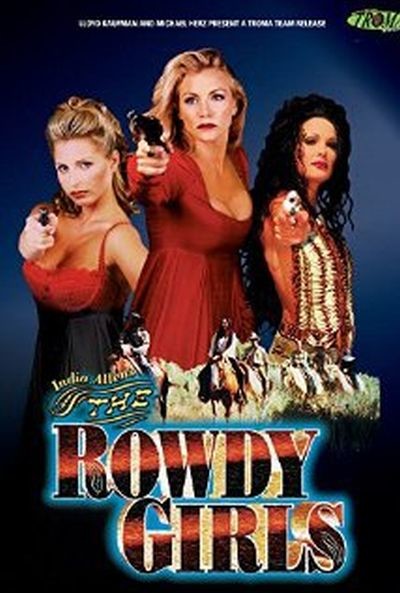
 If you want something more cerebral and family friendly than
If you want something more cerebral and family friendly than 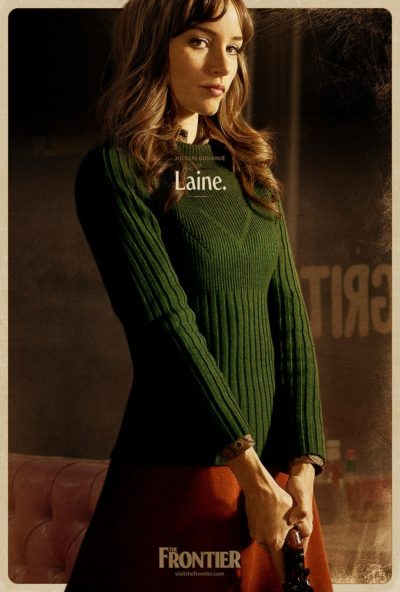 Laine (Donahue) is on the run. From what isn’t immediately clear, but it seems to be something to do with the death of an oil executive. Whatever the reason, she’s staying off the highways and keeping to the back roads. One morning, she wakes up beside The Frontier, a diner/motel owned and operated by Luanne (Lynch), who offers Laine employment, in return for board and lodging. Laine initially rejects the offer, then discovers some other guests are apparently there in the aftermath of an armoured car robbery, which netted them two million dollars. Laine therefore decides it’s in her best interests to stick around, and begins a game of chess with the perpetrators, to see if she can end up walking away with their ill-gotten gains.
Laine (Donahue) is on the run. From what isn’t immediately clear, but it seems to be something to do with the death of an oil executive. Whatever the reason, she’s staying off the highways and keeping to the back roads. One morning, she wakes up beside The Frontier, a diner/motel owned and operated by Luanne (Lynch), who offers Laine employment, in return for board and lodging. Laine initially rejects the offer, then discovers some other guests are apparently there in the aftermath of an armoured car robbery, which netted them two million dollars. Laine therefore decides it’s in her best interests to stick around, and begins a game of chess with the perpetrators, to see if she can end up walking away with their ill-gotten gains. This is set in a world where various kinds of magic exist, alongside humans. The former include shapeshifters, vampires, faes (fairies), mages and the despised “Legacies”. The last-named cover the heroine, Levy Michaels, and that’s a bit of a problem. The reason for the hate, is because some of her kind were responsible, in previous generations, for a very nasty bit of spellcasting called “The Cleanse”; it was basically intended to cause occult genocide, and only narrowly avoided. Since then, Legacies have been harried and hunted by the other kinds. Levy’s late parents taught her to hide her abilities and pass as human, and she does so now, albeit occasionally having to handle those who track her down.
This is set in a world where various kinds of magic exist, alongside humans. The former include shapeshifters, vampires, faes (fairies), mages and the despised “Legacies”. The last-named cover the heroine, Levy Michaels, and that’s a bit of a problem. The reason for the hate, is because some of her kind were responsible, in previous generations, for a very nasty bit of spellcasting called “The Cleanse”; it was basically intended to cause occult genocide, and only narrowly avoided. Since then, Legacies have been harried and hunted by the other kinds. Levy’s late parents taught her to hide her abilities and pass as human, and she does so now, albeit occasionally having to handle those who track her down. This is the first “true” modern Bollywood action heroine film I’ve seen, and has to be appreciated as such. While we’ve covered a couple of Indian films before, these have either been from outside the mainstream e.g. Bandit Queen, or have carefully corralled the action into socially-acceptable avenues, such as sport in Mary Kom. Neither is the case here, though the ending certainly has its share of hypocrisy, with the heroine being more or less sidelined, “for the greater good”.
This is the first “true” modern Bollywood action heroine film I’ve seen, and has to be appreciated as such. While we’ve covered a couple of Indian films before, these have either been from outside the mainstream e.g. Bandit Queen, or have carefully corralled the action into socially-acceptable avenues, such as sport in Mary Kom. Neither is the case here, though the ending certainly has its share of hypocrisy, with the heroine being more or less sidelined, “for the greater good”.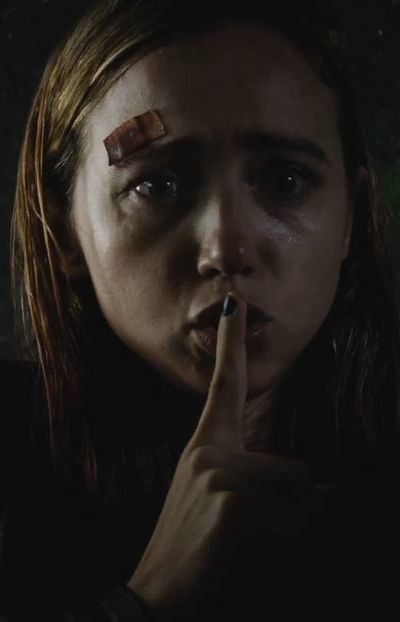 There is a time when a film-maker needs to fall out of love with their script, and approach the resulting movie with a cold, critical eye, analyzing every scene with a single question in mind: Is it essential to the story being told? And if the answer isn’t “Yes”, then the scene needs to be ruthlessly excised. If you don’t, then what results is this film, where a good idea, which could have been lean, mean survival horror at its most stripped-down, becomes instead a cumbersome exercise in social drama.
There is a time when a film-maker needs to fall out of love with their script, and approach the resulting movie with a cold, critical eye, analyzing every scene with a single question in mind: Is it essential to the story being told? And if the answer isn’t “Yes”, then the scene needs to be ruthlessly excised. If you don’t, then what results is this film, where a good idea, which could have been lean, mean survival horror at its most stripped-down, becomes instead a cumbersome exercise in social drama.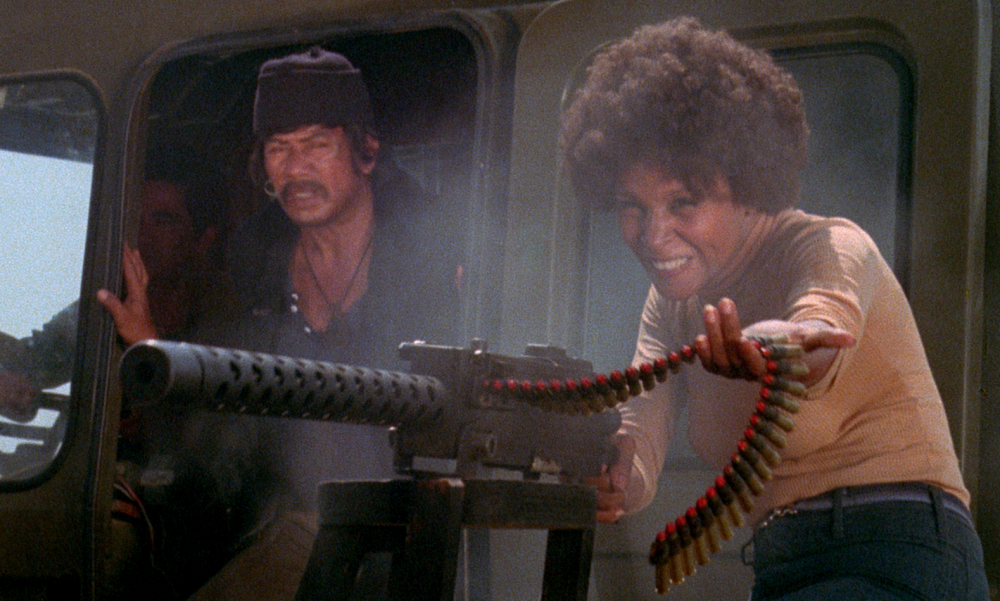 Both Bell and Katon had worked with Santiago before, in
Both Bell and Katon had worked with Santiago before, in 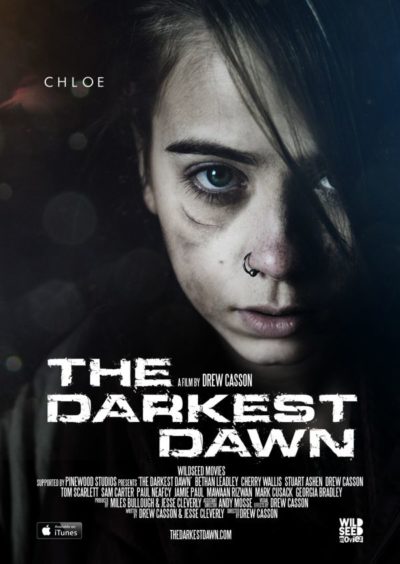 This is apparently a sequel to a previous movie about an alien invasion of Earth (and, specifically, the United Kingdom) from the same director, Hungerford. While I haven’t seen it, this likely didn’t impact things too much here; I sense it’s perhaps closer to a separate story, unfolding in the same universe, than a true sequel. It’s the story of teenage sisters Chloe (Leadley) and Sam (Wallis), with the former getting a video camera for her birthday – just in time for said invasion to kick off, with their family being separated in the ensuing chaos. Toting her camera, Chloe and her sibling take shelter, then scurry through the blasted landscape, facing the threat not just of the extra-terrestrials, but renegade bands of survivors. For it also turns out Chloe, specifically her blood, is a key to the resistance. What are the odds?
This is apparently a sequel to a previous movie about an alien invasion of Earth (and, specifically, the United Kingdom) from the same director, Hungerford. While I haven’t seen it, this likely didn’t impact things too much here; I sense it’s perhaps closer to a separate story, unfolding in the same universe, than a true sequel. It’s the story of teenage sisters Chloe (Leadley) and Sam (Wallis), with the former getting a video camera for her birthday – just in time for said invasion to kick off, with their family being separated in the ensuing chaos. Toting her camera, Chloe and her sibling take shelter, then scurry through the blasted landscape, facing the threat not just of the extra-terrestrials, but renegade bands of survivors. For it also turns out Chloe, specifically her blood, is a key to the resistance. What are the odds?